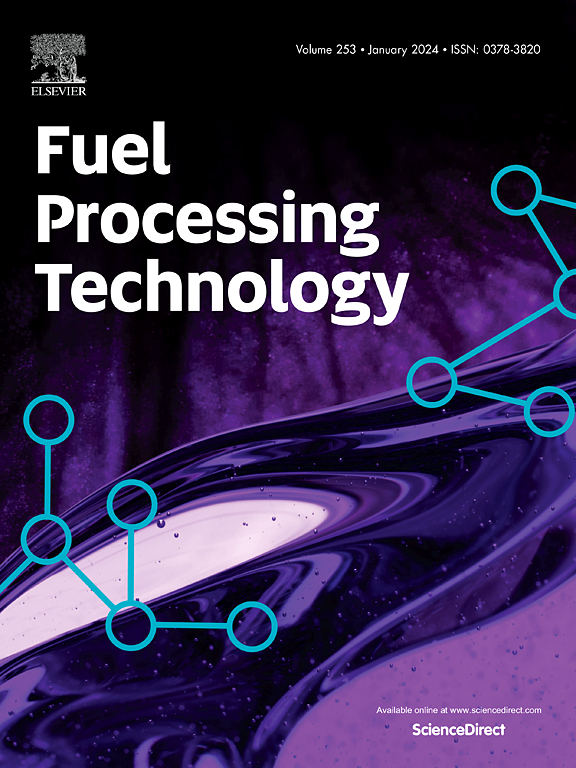Multi-hollow dielectric barrier discharge plasma: An energy-efficient strategy towards mild ammonia synthesis
IF 7.7
2区 工程技术
Q1 CHEMISTRY, APPLIED
引用次数: 0
Abstract
Renewable-driven non-thermal plasma (NTP) technology provides a potentially sustainable alternative for ammonia (NH3) production. Nonetheless, energy efficiency remains a critical bottleneck in NTP reactors. Herein, we propose a multi-hollow dielectric barrier discharge (MDBD) plasma reactor to realize nitrogen hydrogenation towards ambient NH3 synthesis, with the physicochemical characteristics systematically explored for the first time. Transient discharge dynamics were captured by electrical characterization, meanwhile the active intermediate species and the low-temperature properties of MDBD were unveiled by optical spectrum diagnosis. Effects of feed gas, flow rate and specific energy input (SEI) on reaction activity were investigated in terms of energy efficiency (EE) and energy consumption (EC). Notably, remarkable reaction efficacy was realized under low driving powers. For a fully-developed 'steady' discharge, an EE of 1.32 g/kWh and an EC of 46.44 MJ/mol could be attained at 3.20 W. Under a pulse-like fluctuating 'flicker' mode at merely 1.15 W, the EE and EC were improved to 1.78 g/kWh and 34.35 MJ/mol, respectively, further highlighting the energy-effectiveness of MDBD. This work provides a novel approach for energy-efficient, environmental-friendly and distributed NH3 production.
多空心介质阻挡放电等离子体:温和氨合成的节能策略
可再生驱动的非热等离子体(NTP)技术为氨(NH3)的生产提供了一种潜在的可持续替代方案。尽管如此,能源效率仍然是NTP反应堆的关键瓶颈。本文提出了一种多空心介质阻挡放电(MDBD)等离子体反应器,用于实现氮加氢合成环境NH3,并首次系统地探索了其物理化学特性。通过电学表征捕获了MDBD的瞬态放电动态,同时通过光谱诊断揭示了MDBD的活性中间物质和低温特性。从能量效率(EE)和能量消耗(EC)两方面考察了原料气、流量和比能量输入(SEI)对反应活性的影响。值得注意的是,在低驱动功率下,反应效果显著。对于完全发展的“稳定”放电,在3.20 W时可以达到1.32 g/kWh的EE和46.44 MJ/mol的EC。在1.15 W的脉冲波动“闪烁”模式下,EE和EC分别提高到1.78 g/kWh和34.35 MJ/mol,进一步突出了MDBD的能效。这项工作为高效、环保和分布式的NH3生产提供了一种新的途径。
本文章由计算机程序翻译,如有差异,请以英文原文为准。
求助全文
约1分钟内获得全文
求助全文
来源期刊

Fuel Processing Technology
工程技术-工程:化工
CiteScore
13.20
自引率
9.30%
发文量
398
审稿时长
26 days
期刊介绍:
Fuel Processing Technology (FPT) deals with the scientific and technological aspects of converting fossil and renewable resources to clean fuels, value-added chemicals, fuel-related advanced carbon materials and by-products. In addition to the traditional non-nuclear fossil fuels, biomass and wastes, papers on the integration of renewables such as solar and wind energy and energy storage into the fuel processing processes, as well as papers on the production and conversion of non-carbon-containing fuels such as hydrogen and ammonia, are also welcome. While chemical conversion is emphasized, papers on advanced physical conversion processes are also considered for publication in FPT. Papers on the fundamental aspects of fuel structure and properties will also be considered.
 求助内容:
求助内容: 应助结果提醒方式:
应助结果提醒方式:


